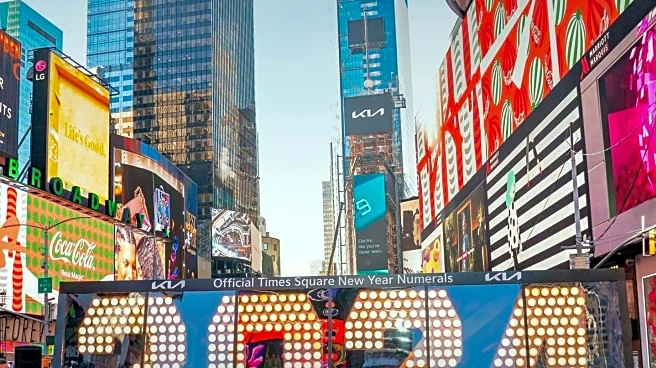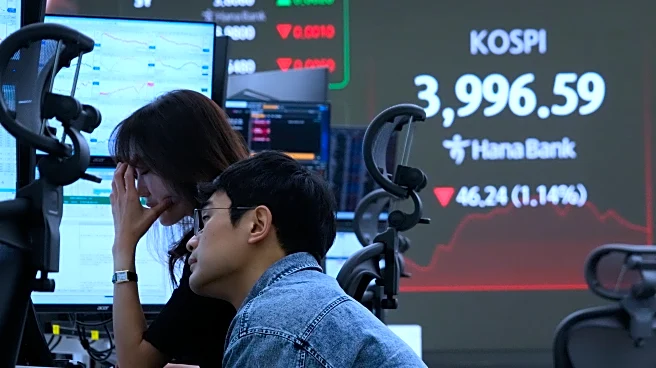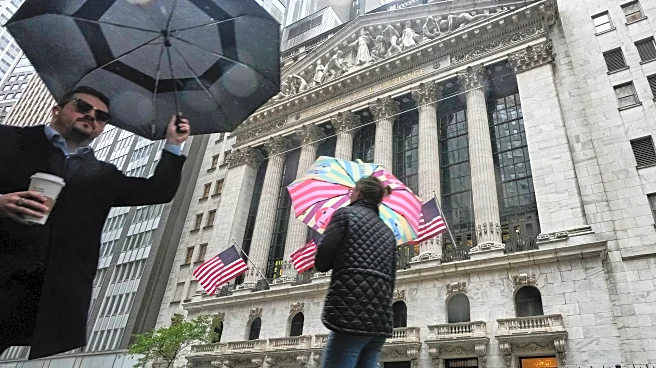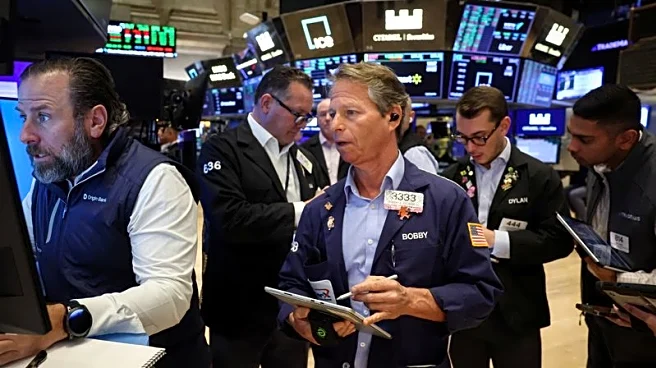What's Happening?
The New York Post has curated a list of Halloween costume ideas inspired by viral news stories from 2025. The costumes are designed to be humorous rather than scary, reflecting the year's notable events
and public figures. Among the highlighted costumes are Katy Perry's space suit from her Blue Origin flight, a scandalous couple caught on kiss-cam at a Coldplay concert, and a political advisor involved in a bribery scandal. The list also includes costumes inspired by Pope Leo XIV, a Chicago White Sox fan, and Melania Trump's signature hats. The Post's staff demonstrated these costumes, emphasizing creativity and affordability, with many items available on Amazon.
Why It's Important?
This approach to Halloween costumes reflects a cultural trend of using humor to cope with the year's challenges, including economic instability and anxiety about artificial intelligence. By turning news stories into costume ideas, the New York Post taps into the public's desire for lightheartedness amidst serious global issues. This trend also highlights the influence of media on popular culture, as people seek to engage with current events in a playful manner. The costumes serve as a commentary on the year's events, allowing individuals to express their perspectives and engage in social discourse through creative expression.
What's Next?
As Halloween approaches, these costume ideas may inspire further creativity among the public, leading to a variety of news-inspired costumes at parties and events. Retailers might see increased demand for items that can be used to replicate these costumes, such as space suits and oversized hats. Additionally, the trend of using current events as costume inspiration could continue in future years, reflecting ongoing societal shifts and the public's engagement with media narratives.
Beyond the Headlines
The use of news stories as Halloween costume inspiration raises questions about the intersection of media, culture, and consumerism. It highlights how public figures and events are commodified and transformed into entertainment, reflecting broader societal attitudes towards news consumption. This trend also underscores the role of humor in processing complex issues, suggesting that satire and parody remain powerful tools for public engagement and critique.













